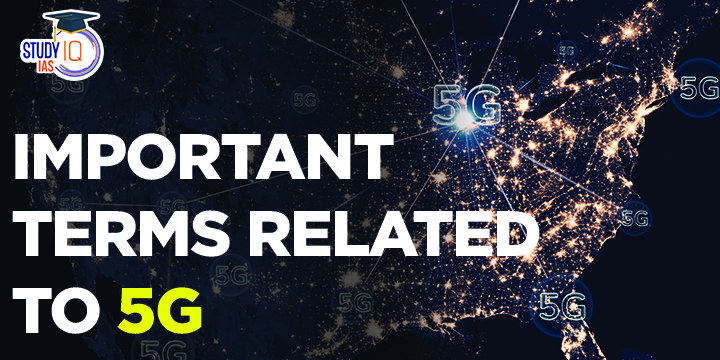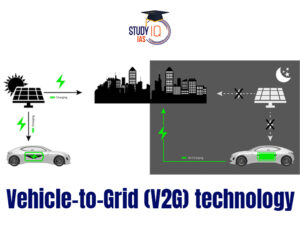Table of Contents
Important Terms Related to 5G Network
Latency
- Latency refers to the delay between a request for data transfer and when the data transfer begins.
- For example, this could be time between when you click a link and the network starts sending you the data contained in it.
- The latency of 4G networks is between 60 to 98 milliseconds. 5G Network Technology should theoretically bring this under 5 milliseconds, maybe even around one millisecond.
Spectrum
- It refers to the bands of radio frequencies that are allocated to different telecom companies and industries.
- In general, a higher frequency spectrum means faster data connectivity but this comes at the cost of range. A lower frequency spectrum loses out on speed but makes up for it with better range.
Bands of 5G Network
- 5G Network Technology is divided into three frequency bands (low, mid, and high). Each band has different capabilities.
- Low Band 5G Network:
- It transmits around the 600 to 700MHz range providing blanket coverage across a large area.
- However, it offers slower speeds around 50 Mbps.
- The low band is used commercially to provide nationwide coverage and privately to help businesses communicate with rural job sites.
- For example, low-band 5G is used in the energy industry to communicate with remote oil fields, mining operations, and wind farms.
- Mid Band 5G Network:
- It typically transmits around 1.7GHz to 2.5GHz, offering a solid balance between coverage and speed.
- Speeds in the mid band can range from 100 to 900 Mbps.
- The mid band can be used in many applications due to its balance of speed and coverage. Many business parks, college campuses, and smart cities rely on the mid band to provide continuous service to IoT devices, cameras, and end users.
- High Band 5G Network:
- High-band 5G (mmWave) typically falls between 24 gigahertz and 100 gigahertz offering the fastest speeds across short distances.
- In many cases, high-band 5G provides 1 Gbps speeds but can reach speeds as high as 10 Gbps in a controlled environment.
- Densely populated cities and businesses use the high band to give the best 5G performance to a targeted area.
- However, it offers very limited coverage and mmWave technology is also notoriously fickle and susceptible to interference, making it hard to get a stable connection.

Sub-6 Gigahertz 5G Network
- Sub-6 gigahertz 5G is a catch-all term for low-band mid-band 5G frequencies that come under the frequency of 6 gigahertz.
- Basically, it refers to all 5G spectra that are not mmWave
5G Network Massive MIMO
- MIMO stands for “multiple input, multiple output.” MIMO refers to when phones have multiple antennas that allow them to simultaneously send multiple data signals over the same frequency.
- This allows phones and other devices to have a higher bandwidth internet connection. For example, a 4×4 MIMO phone will have four antennas for 4 simultaneous data streams.
5G Link Aggregation
- Network aggregation refers to when telecom operators take different bands of 5G frequencies and bind them together so that phones with the capability can tune into the least congested, and therefore fastest one.
5G Network Slicing Architecture
- Network slicing refers to when small parts of certain spectra are reserved for specific kinds of devices depending on their connection needs.
- For example, a cellular tower can give a lower band and slower connection to a smart electricity meter in a building while also offering higher power, faster and lower latency 5G connection to an autonomous car that is transmitting high-definition sensor data.
5G Network Small cell
- Small cells are physically small, low-powered radio frequency base stations built to improve wireless network efficiency.
- Small cells have the capacity to transfer low-, medium- and high-band data spectrums, such as mmWave.
- Because of 5G’s high speeds with limited ranges, small cells will boost and ensure reliable signal strength to benefit 5G signals.
- Unlike cell towers, small cells are located every few blocks instead of miles.
5G Network Radio Access Network (RAN)
- Radio access networks connect devices to various parts of networks through radio connections.
- The most recent RAN evolution divides the user plane and control plane into separate elements, which enables various 5G features, such as network slicing and MIMO, to function properly.


 SSC CGL Exam 2025 Apply Online Starts Ap...
SSC CGL Exam 2025 Apply Online Starts Ap...
 Daily Quiz 19 April 2025
Daily Quiz 19 April 2025
 Vehicle-to-Grid (V2G) Technology and its...
Vehicle-to-Grid (V2G) Technology and its...





















